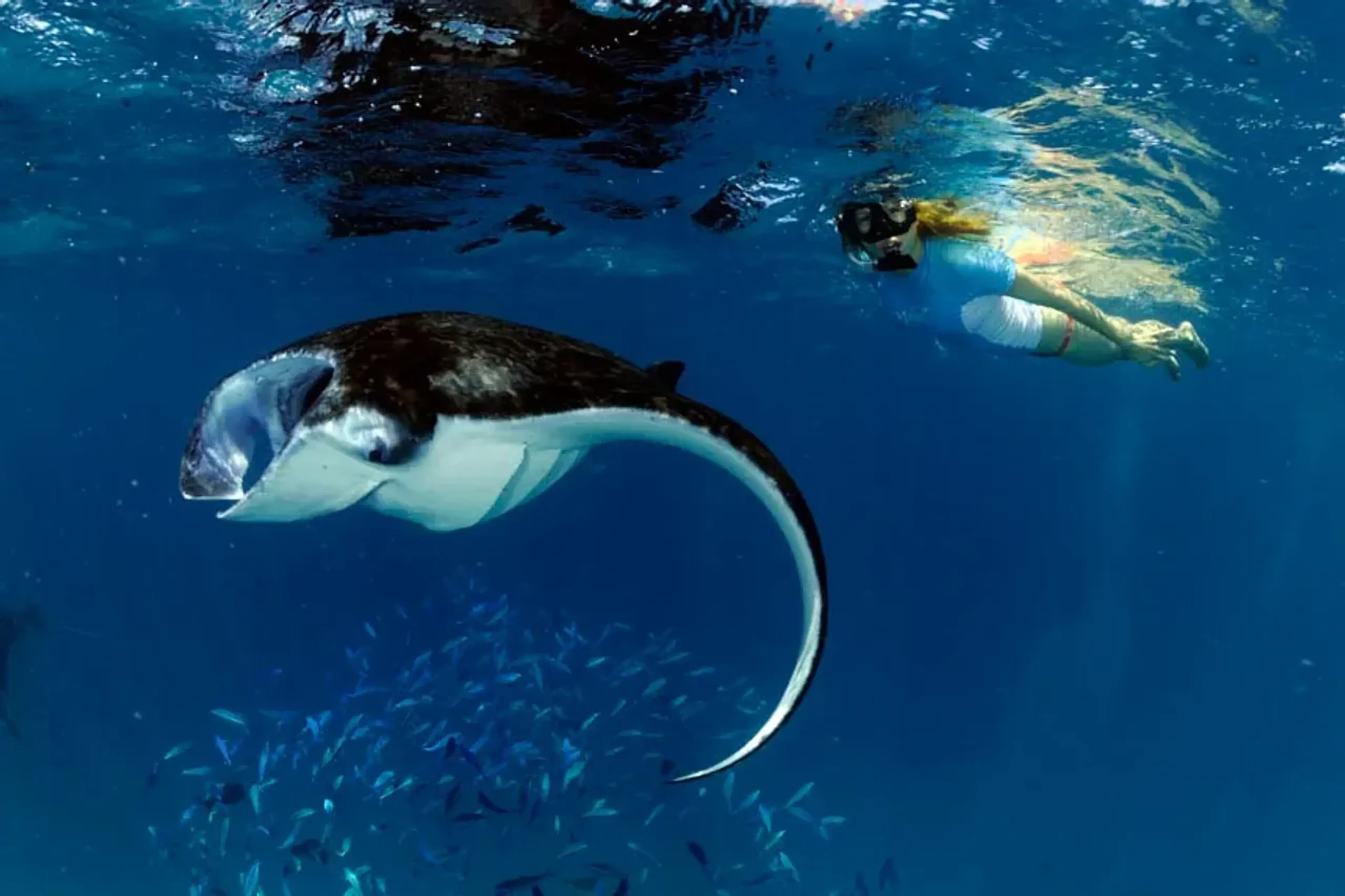Isabelle Barbier
• 4 min read
Oceanic manta rays are the largest species of rays in the world. Get to know the best season and sites to see oceanic mantas, some tips to responsibly snorkel and scuba dive with them, and what you can do for their conservation!
Scuba diving with giant manta rays is a privilege as they evolve mostly away from reefs, in oceanic habitats. Some of the hotspots to see them are the Revillagigedo Archipelago in Mexico, the Maldives Northern atolls, or the Galápagos.
Where To Scuba Dive With Oceanic Mantas?
In the Americas, the most iconic place to see oceanic mantas is the Revillagigedo Archipelago in Mexico, often known as “Socorro”. Only accessible with a liveaboard between November and May, the volcanic islands have been recognized as a UNESCO world heritage site. Since 2017, the archipelago is part of a large Marine Protected Area. Its is common to see there oceanic mantas with a wingspan reaching almost 9 meters (29 feet)!
SeaCrush Pick: 👉 best-value liveaboard trip to Socorro (9 nights starting from ...)
Still in the Americas, the Galápagos Archipelago, Ecuador and Cocos Islands, Costa Rica are other hotspots to see oceanic mantas. Manta rays peak season in the Galapagos is between December to May, and in Cocos island, between June and December.
In the Indian Ocean, the Maldives northern atolls, and more specifically Hanifaru Bay, are known for their manta congregation between May and November. In February-March, it's possible to see some in Maldives deep south atolls.
Another hotspot for biodiversity where you can see some oceanic mantas and also some reef mantas is Raja Ampat, Indonesia with several cleaning stations in the North and in the South, in Misool.
There are several places in the world where you can see oceanic mantas, such as in Hawaï, Fiji, French Polynesia, Mozambique, and more.
The places listed above happen to be some of the most biodiverse diving destinations in the world, where you'll have the best chances to see them, among plenty of other species!
A Few Rules to Know Before Jumping in the Ocean!
Manta rays are very sensitive to disturbance. Chasing them, splashing around or being too close could drive them away from areas they use to get cleaned, eat, or breed.
They are naturally curious, so chances are they will come and see you anyway!
This Manta Trust video shows good practices everyone should adopt when snorkeling or scuba diving with manta rays:
Join a Dive Trip With Purpose to Protect Oceanic Mantas
Oceanic mantas are migratory species, and even though some areas are now protected, they are often victims of fisheries driven by the demand for their gill plates and bycatch.
In 2019, the International Union for the Conservation of Nature (IUCN) changed oceanic mantas classification from “Vulnerable” to “Endangered”. The oceanic mantas then became first manta ray to be listed as an endangered species.
Joining a dive trip with purpose is a way to give back to the ocean, while meeting like-minded divers.
You do not need to be a scientific to participate to a manta expedition. Every diver and snorkeller can make a difference.
For instance, every manta has a unique pattern of spots on its belly, it's often possible to take pictures or videos of it. No need for a fancy camera to do so. A simple Go Pro, an Olympus TG5 or even an Iphone in a case works out! The pictures will then be submitted to a global manta rays database. This very simple technique allows scientists to estimate population size and document movements seasonally and spatially.
Another technique sometimes used is tagging. Over time this information can be used to support the implementation of Marine Protected Areas.
SeaCrush Pick: 👉 join a Manta Expedition in Maldives: Maldives Manta Expedition (7 nights starting from ...)
During such a trip, you’ll be able to learn more about the species from a scientist, contribute to research, and do as many dives as if you were on a regular dive trip.
If you'd like to dive with oceanic mantas or learn more about them contact SeaCrush. SeaCrush is the first dive travel agency to have received the "Responsible Manta Tourism Operator" Manta Trust label.


